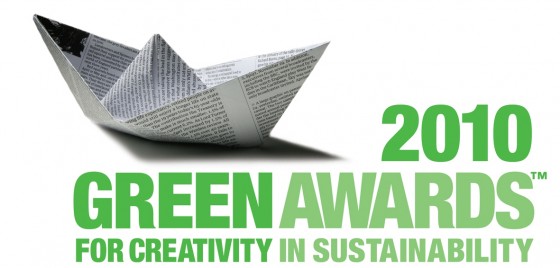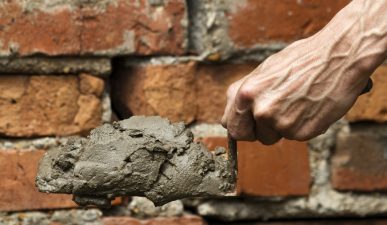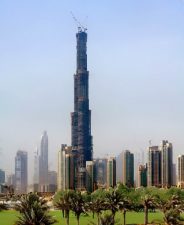 A 21st Century Bionic Pioneer, Melissa Sterry talks to Green Prophet about built environments that embrace the volatile new world order.
A 21st Century Bionic Pioneer, Melissa Sterry talks to Green Prophet about built environments that embrace the volatile new world order.
Melissa Sterry makes our spooky future full of increased flooding, stronger hurricanes, and severe drought look like a playground.
By applying Resilience Theory, Biomimicry, and Living Architecture principles to every aspect of building, she is creating a city model that not only anticipates but welcomes intensifying natural phenomena.
A judge on the recent GREEN AWARDS 2010 panel, Melissa is an interdisciplinary design scientist, futurologist and sustainable innovation strategist.
The think tank and laboratory Societás Melissa founded in 2004 fuses the sustainability mantra with media, design, and visual arts, while NEW FRONTIERS is “A catalyst for rapid innovation of sustainable design.”
Politicians are talking, but Melissa is walking, and she’s taking all of the world’s most cutting-edge thinkers with her.
Melissa, you are one of 25 judges on the GREEN AWARDS 2010 panel. This competition aims to reward corporate organizations, agencies, charitable institutions, and government bodies for cutting-edge, inspiring sustainability communications. Before I ask you to say more about that, what does the panel take as the current definition for sustainability?
The GREEN AWARDS adhere to the Brundtland report’s international definition of sustainable development to include environment, equity and economy: “Sustainable Development that meets the needs of the present without compromising the ability of future generations to meet their own needs”
Though I’m sure it’s different for every category, what are the ingredients that make up an amazing Corporate Social Responsibility report or sustainability communications campaign?
The judges wanted to see examples of CSR reports being as effective online as offline. They were looking for creativity in presentation, ease of usability and navigation, clarity of message as well as substance. They also wanted to see examples of sustainable production and innovation in format and that sustainability was embedded throughout the organisation. Overall the judges were looking for creative excellence and effectiveness. Furthermore, evidence of good media coverage where applicable, good examples of outreach and leadership on environmental issues, especially when campaigning, as well as evidence of behavior change amongst the target audience.
Were there many entries from the Middle East?
Yes we did have entries from the Middle East, one of which is on the Shortlist. The global aspect of the Awards made it both an interesting and challenging task for the judges. While the entries presented the judges with a global panorama of sustainability communications, they also had to understand diverse cultures in judging entries.

 As the founder of Societás and NEW FRONTIERS, you are an excellent candidate as judge of this competition. Can you tell us a bit more about your work at NEW FRONTIERS in particular and why you think it is important?
As the founder of Societás and NEW FRONTIERS, you are an excellent candidate as judge of this competition. Can you tell us a bit more about your work at NEW FRONTIERS in particular and why you think it is important?
Politicians and policymakers dictate targets, but designers, architects, engineers, scientists and planners enable us to meet those targets. Climate change, biodiversity loss and natural resource depletion challenge traditional design practices, consequently the design rulebook is being re-written. Yet, virtually no infrastructure currently exists nationally or globally, to equip practitioners…with the knowledge they need to create best of breed sustainable solutions.
NEW FRONTIERS was created to fill that gap. It’s designed to stimulate truly sustainable design solutions fit for the social and environmental challenges of the 21st Century and beyond. It sets out to capture, catalyze and create ideas and innovation, from architecture to urban design to materials engineering to product design…
Somehow between all of this, you are finding time to work on a PhD; especially interesting is your project “The Bionic City” which applies the mechanics of animal and plant adaptations to a city model. Can you say more about this?
After a period of low seismic activity and climate stability, it’s becoming clear that in the coming years the Earth will become a more volatile place, in which extreme weather and geological events are more frequent. The Bionic City is a model I’m developing that will be able to anticipate and prepare for such events, including flooding, hurricanes, heat waves, fires and earthquakes.
Dubbing it the ultimate smart city I’m applying the principles of Resilience Theory, Biomimicry and Living Architecture across its design to create a city ecosystem that fuses both natural and man-made biomimetic technologies in a highly integrated symbiotic relationship spanning every element of the city’s infrastructure.
While embedding existing built environment sustainability practices, including renewable energy, light and water harvesting, urban farming, ecosystem services and recycling, I’m researching the potential for a new generation of sustainability technologies including morphogenic and chromataphoric (colour-changing) materials, coatings and structures.
Whereas historically extreme meteorological and geological events are worst-case scenarios for cities, The Bionic City turns today’s disasters into tomorrow’s opportunities. In this way it mimics how natural ecosystems have evolved to accommodate such events. For example ecosystems in flood-prone regions, such as deltas, build their lifecycles around annual flooding events. The Bionic City, will do likewise.
Is there a perfect of example of an animal or plant adaptation that might be used to build structures that can withstand the Middle East’s looming water crisis?
There are thousands. Nature is supremely efficient; it wastes absolutely nothing and where resources are scarce it finds the most ingenious ways to harness them. The clues to the solutions to the Middle East’s water crisis are on its doorstep, because ecosystems embed resilience to any crisis that occurs with frequency in their vicinity. Early Middle Eastern civilizations knew this and the principles of traditional Arabic architectures clearly illustrate myriad references to observations of the natural world. Any desert species, plant or animal, will illustrate one or more effective water capture and storage solutions.
Going forward, we face the dual challenge of unsustainable population growth and resource reduction. This is especially true in the Middle East. What must architects, designers, educators, urban planners, and policy-makers do differently to help to alleviate the discomforts of this new reality?
Climate change and sustainability issues are nothing new to humankind. In the four million or so years that we’ve walked the Earth our species has nearly become extinct not once, but several times due to major climate changes that have rapidly stripped away the resources upon which we are reliant to survive. During times of great abundance our species has populated new lands, devoted time to evolving new creative, intellectual and practical skills and set out to make its mark on the landscape, be that the creation of a monument, a temple, a canal, a city or an empire.
However, on each and every past occasion, civilizations have made a critical error of judgment that ultimately led to their downfall, that being they assumed the abundance would continue. We don’t live on a steady state planet.
Instead we live on a large ball of molten rock, topped by a thin crust, made-up of pieces that constantly jostle for position, 70% of which are covered by water. This ball of rock is protected by a thin layer of gases and a magnetic field the strength of which goes up and down, varying the ball’s resilience to external dangers, including amongst other things solar storms. We cannot be certain that we can succeed where past civilizations failed. However, if we can learn from their mistakes and evolve a new paradigm that accommodates change, rather than resists it, we may potentially break out from our bad habits.
Finally, it seems there is no end to the creative potential of human beings. In the Middle East we hear about more and more people embracing clever, healthy solutions to human challenges. Do you think our impulse to create can overcome our impulse to destroy?
While astrophysicists do not yet fully understand anti matter, they do understand that it has a symbiotic relationship with matter and that neither could exist without the other, as is the case with light and dark, life and death and creation and destruction. The creation of a new socio-economic model is dependant on the destruction of the old socio-economic model. We must destroy the old to create the new. The problem is not destruction, but our attitude towards it.
Had our planet not been bombarded by H2O laden asteroids there would be no oceans. Were it not for volcanic eruptions the earliest known life forms would not have evolved. Without the Big Bang there would be no Universe. Humans are the temporary janitors of the Earth and we can’t be too sure how long we’ll be here.
However, while we are it makes sense to keep our home in good working order, which is something we’re not doing at the moment. We ought not be fearful of destruction, because we’re going to have to do a lot of it in coming years, for we have much to create, which in turn will one day be destroyed. Creation and destruction are two sides of the same coin.
For more information about Melissa Sterry and The Bionic City, please visit her website: http://www.melissasterry.com
More interviews with other shakers and movers:





